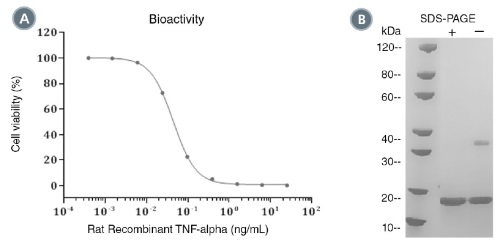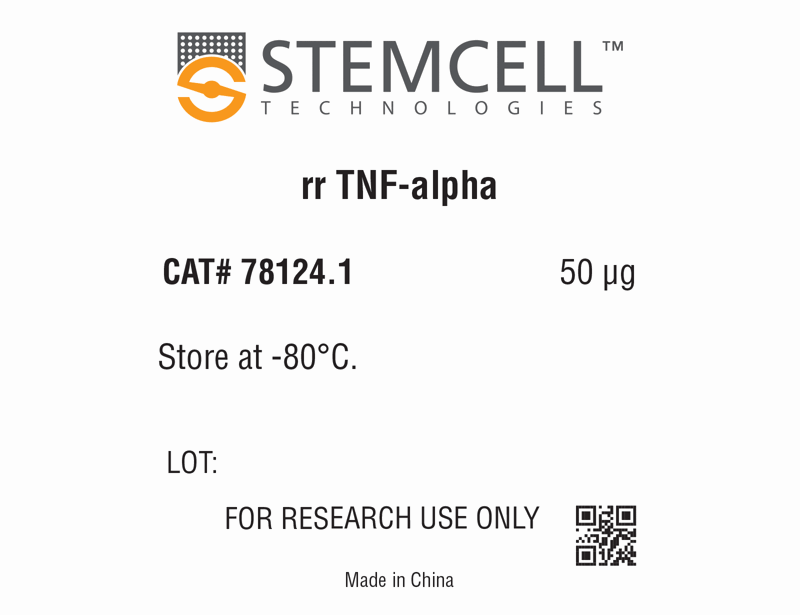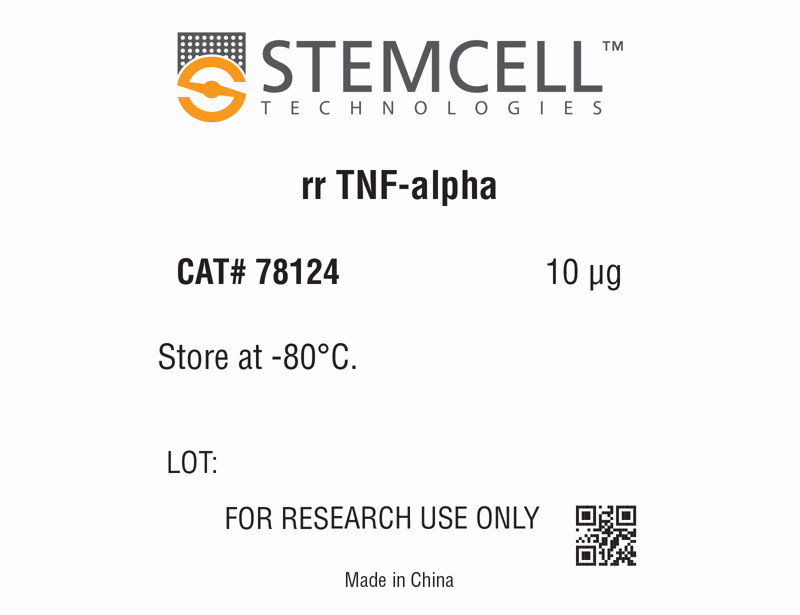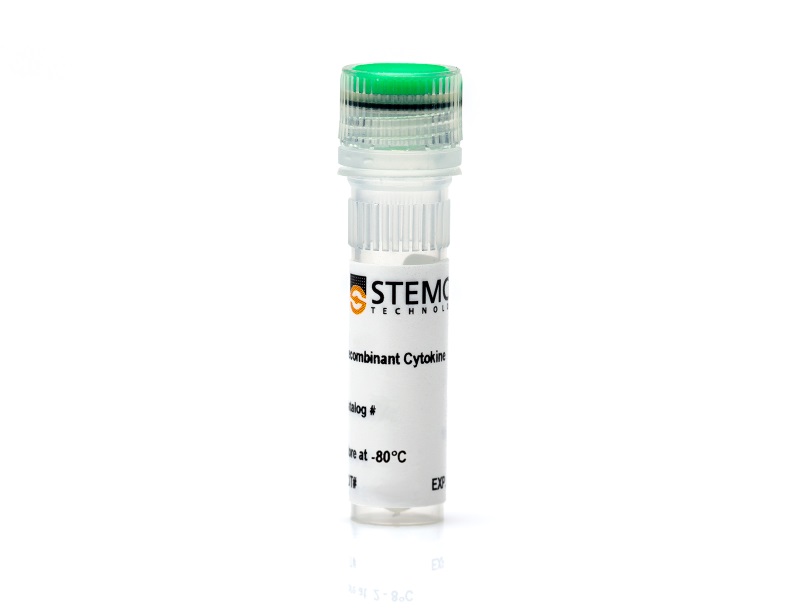Rat Recombinant TNF-alpha
Tumor necrosis factor alpha
概要
Tumor necrosis factor-alpha (TNF-α) is a pro-inflammatory cytokine that activates NF-κB, MAPK, and PI3K/AKT pathways. Activated T cells and macrophages are the primary producers of TNF-α in response to inflammation and infectious conditions. Many other cell types have been shown to produce TNF-α, among them B cells, NK cells, mast cells, neutrophils, dendritic cells, microglia, endothelial cells, smooth muscle cells, cardiomyocytes, and fibroblasts. TNF-α has cytotoxic effects on cancerous cells by stimulating anti-tumor immunosuppressive responses. TNF-α stimulates expression of E- and P-selectins, thus facilitating adhesion of neutrophils, monocytes, and memory T cells to activated platelets and endothelial cells (Zelová & Hošek). Other effects of TNF-α include vasodilatation and edema formation. In vitro studies of adult rat neural progenitor cells (NPCs) demonstrate that TNF-α reduces neurogenesis in dentate gyrus-derived NPCs, and promotes astrogliogenesis in subventricular zone-derived NPCs (Borsini et al.).
Subtype
Cytokines
Alternative Names
Cachectin, Cytotoxin, Differentiation-inducing factor, DIF, Necrosin, TNFA, TNFSF2, Tumor necrosis factor
Cell Type
Granulocytes and Subsets, Monocytes, T Cells
Species
Rat
Area of Interest
Immunology
Molecular Weight
17.4 kDa
Purity
≥ 95%
技术资料
| Document Type | 产品名称 | Catalog # | Lot # | 语言 |
|---|---|---|---|---|
| Product Information Sheet | Rat Recombinant TNF-alpha | 78124, 78124.1 | All | English |
| Safety Data Sheet | Rat Recombinant TNF-alpha | 78124, 78124.1 | All | English |
数据及文献
Data

(A) The biological activity of Rat Recombinant TNF-alpha was tested by its ability to inhibit cell growth of mouse L929 cells. Cell viability was measured using a fluorometric assay method. The EC50 is defined as the effective concentration of the growth factor at which cell proliferation is at 50% of maximum. The EC50 in the above example is less than 0.05 ng/mL. (B) 2 μg of Rat Recombinant TNF-alpha was resolved with SDS-PAGE under reducing (+) and non-reducing (-) conditions and visualized by Coomassie Blue staining.



